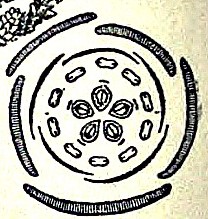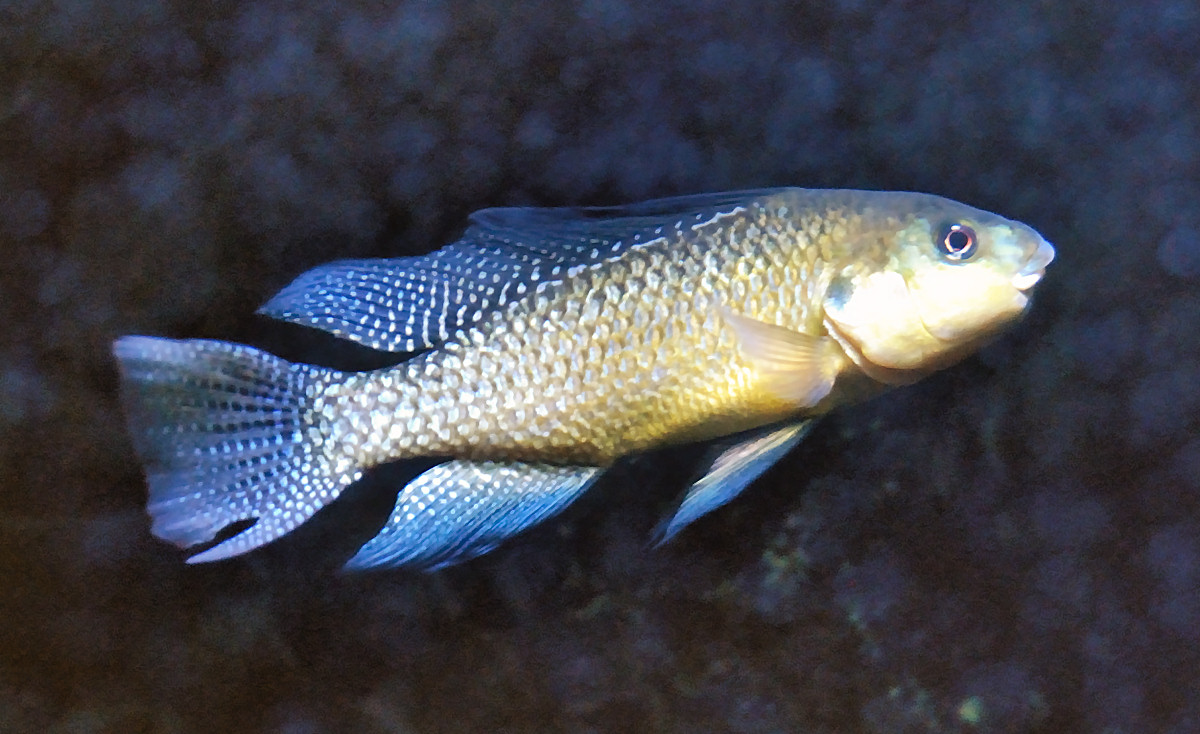|
Encyocratella Olivacea
''Encyocratella'' is a monotypic genus of Tanzanian tarantulas (family Theraphosidae) containing the single species, ''Encyocratella olivacea'', also known as the Tanzanian black and olive baboon spider. It was first described by Embrik Strand in 1907, and is found in Tanzania. Description They are one of two tarantulas which females do not have a spermatheca, instead opting for oviducts and uterus externus. Its carapace is a golden color, with a golden opisthosoma with a black fishbone pattern and spotting. The femur is a deep black color, with the rest of the legs being golden as most of the rest of the body. Habitat They are found in the rainforests on the southern slopes of mount Meru in the Arusha Region. The average temperature is 19°C, with average yearly rainfall of 1400mm. They are usually found 2200 m above sea level, a region that is home to plants such as ''Juniperus'', ''Lobelia'' and ''Sedum''. Behavior They are arboreal in nature, but also show burrowi ... [...More Info...] [...Related Items...] OR: [Wikipedia] [Google] [Baidu] |
Embrik Strand
Embrik Strand (2 June 1876 – 3 November 1947) was an entomologist and arachnologist who classified many insect and spider species, including the greenbottle blue tarantula. Life and career Strand was born in Ål, Norway. He studied at the University of Kristiania (now University of Oslo). Around 1900 he focused on collecting insect specimens from Norway. These are now deposited at the university's museum, where he worked as a curator from 1901 to 1903. After studying at the University of Oslo, Strand traveled in Norway from 1898 to 1903 collecting a great number of insects. For part of this time (1901–1903) he was a conservator in the museum of zoology of the university. He then left for Germany where he continued his studies of zoology at the University of Marburg (1903). He then worked with State Museum of Natural History Stuttgart (1905) and, later, that of Tübingen and then with Senckenberg Museum in Frankfurt. From 1907, he worked with Natural History Museum, Ber ... [...More Info...] [...Related Items...] OR: [Wikipedia] [Google] [Baidu] |
Height Above Sea Level
Height above mean sea level is a measure of a location's vertical distance (height, elevation or altitude) in reference to a vertical datum based on a historic mean sea level. In geodesy, it is formalized as orthometric height. The zero level varies in different countries due to different reference points and historic measurement periods. Climate change and other forces can cause sea levels and elevations to vary over time. Uses Elevation or altitude above sea level is a standard measurement for: * Geographic locations such as towns, mountains and other landmarks. * The top of buildings and other structures. * Mining infrastructure, particularly underground. * Flying objects such as airplanes or helicopters below a Transition Altitude defined by local regulations. Units and abbreviations Elevation or altitude is generally expressed as "metres above mean sea level" in the metric system, or " feet above mean sea level" in United States customary and imperial units. Common ... [...More Info...] [...Related Items...] OR: [Wikipedia] [Google] [Baidu] |
Spiders Of Africa
Spiders ( order Araneae) are air-breathing arthropods that have eight limbs, chelicerae with fangs generally able to inject venom, and spinnerets that extrude silk. They are the largest order of arachnids and rank seventh in total species diversity among all orders of organisms. Spiders are found worldwide on every continent except Antarctica, and have become established in nearly every land habitat. , 53,034 spider species in 136 families have been recorded by taxonomists. However, there has been debate among scientists about how families should be classified, with over 20 different classifications proposed since 1900. Anatomically, spiders (as with all arachnids) differ from other arthropods in that the usual body segments are fused into two tagmata, the cephalothorax or prosoma, and the opisthosoma, or abdomen, and joined by a small, cylindrical pedicel. However, as there is currently neither paleontological nor embryological evidence that spiders ever had a se ... [...More Info...] [...Related Items...] OR: [Wikipedia] [Google] [Baidu] |
Monotypic Theraphosidae Genera
In biology, a monotypic taxon is a taxonomic group (taxon) that contains only one immediately subordinate taxon. A monotypic species is one that does not include subspecies or smaller, infraspecific taxa. In the case of genera, the term "unispecific" or "monospecific" is sometimes preferred. In botanical nomenclature, a monotypic genus is a genus in the special case where a genus and a single species are simultaneously described. Theoretical implications Monotypic taxa present several important theoretical challenges in biological classification. One key issue is known as "Gregg's Paradox": if a single species is the only member of multiple hierarchical levels (for example, being the only species in its genus, which is the only genus in its family), then each level needs a distinct definition to maintain logical structure. Otherwise, the different taxonomic ranks become effectively identical, which creates problems for organizing biological diversity in a hierarchical system. ... [...More Info...] [...Related Items...] OR: [Wikipedia] [Google] [Baidu] |
Endemic Fauna Of Tanzania
Endemism is the state of a species being found only in a single defined geographic location, such as an island, state, nation, country or other defined zone; organisms that are indigenous to a place are not endemic to it if they are also found elsewhere. For example, the Cape sugarbird is found exclusively in southwestern South Africa and is therefore said to be ''endemic'' to that particular part of the world. An endemic species can also be referred to as an ''endemism'' or, in scientific literature, as an ''endemite''. Similarly, many species found in the Western ghats of India are examples of endemism. Endemism is an important concept in conservation biology for measuring biodiversity in a particular place and evaluating the risk of extinction for species. Endemism is also of interest in evolutionary biology, because it provides clues about how changes in the environment cause species to undergo range shifts (potentially expanding their range into a larger area or becomin ... [...More Info...] [...Related Items...] OR: [Wikipedia] [Google] [Baidu] |
List Of Theraphosidae Species
This page lists all described genera and species of the spider family Theraphosidae. , the World Spider Catalog accepted 1041 species in 156 genera: A ''Acanthopelma'' '' Acanthopelma'' F. O. Pickard-Cambridge, 1897 * '' Acanthopelma beccarii'' Caporiacco, 1947 - Guyana * '' Acanthopelma rufescens'' F. O. Pickard-Cambridge, 1897 ( type) - Central America ''Acanthoscurria'' '' Acanthoscurria'' Ausserer, 1871 * '' Acanthoscurria antillensis'' Pocock, 1903 - Lesser Antilles * '' Acanthoscurria belterrensis'' Paula, Gabriel, Indicatti, Brescovit & Lucas, 2014 - Brazil * '' Acanthoscurria chacoana'' Brèthes, 1909 - Brazil, Bolivia, Paraguay, Argentina * '' Acanthoscurria cordubensis'' Thorell, 1894 - Argentina * '' Acanthoscurria geniculata'' (C. L. Koch, 1841) ( type) - Brazil * '' Acanthoscurria gomesiana'' Mello-Leitão, 1923 - Brazil * '' Acanthoscurria insubtilis'' Simon, 1892 - Bolivia, Brazil * '' Acanthoscurria juruenicola'' Mello-Leitão, 1923 - Brazil * '' Acanthoscurri ... [...More Info...] [...Related Items...] OR: [Wikipedia] [Google] [Baidu] |
Venom
Venom or zootoxin is a type of toxin produced by an animal that is actively delivered through a wound by means of a bite, sting, or similar action. The toxin is delivered through a specially evolved ''venom apparatus'', such as fangs or a stinger, in a process called ''envenomation''. Venom is often distinguished from ''poison'', which is a toxin that is passively delivered by being ingested, inhaled, or absorbed through the skin, and ''toxungen'', which is actively transferred to the external surface of another animal via a physical delivery mechanism. Venom has evolved in terrestrial and marine environments and in a wide variety of animals: both predators and prey, and both vertebrates and invertebrates. Venoms kill through the action of at least four major classes of toxin, namely necrosis, necrotoxins and cytotoxins, which kill cells; neurotoxins, which affect nervous systems; myotoxins, which damage muscles; and Hemotoxin, haemotoxins, which disrupt Thrombus, blood clotti ... [...More Info...] [...Related Items...] OR: [Wikipedia] [Google] [Baidu] |
Burrow
file:Chipmunk-burrow (exits).jpg, An eastern chipmunk at the entrance of its burrow A burrow is a hole or tunnel excavated into the ground by an animal to construct a space suitable for habitation or temporary refuge, or as a byproduct of Animal locomotion, locomotion. Burrows provide a form of shelter against predation and exposure to the elements, and can be found in nearly every biome and among various biological interactions. Many animal species are known to form burrows. These species range from small amphipods, to very large vertebrate species such as the polar bear. Burrows can be constructed into a wide variety of substrates and can range in complexity from a simple tube a few centimeters long to a complex network of interconnecting tunnels and chambers hundreds or thousands of meters in total length; an example of the latter level of complexity, a well-developed burrow, would be a rabbit Warren (burrow), warren. Vertebrate burrows A large variety of vertebrates constru ... [...More Info...] [...Related Items...] OR: [Wikipedia] [Google] [Baidu] |
Sedum
''Sedum'' is a large genus of flowering plants in the family Crassulaceae, members of which are commonly known as stonecrops. The genus has been described as containing up to 600 species, subsequently reduced to 400–500. They are leaf succulents found primarily in the Northern Hemisphere, but extending into the southern hemisphere in Africa and South America. The plants vary from annual and creeping herbs to shrubs. The plants have water-storing leaves. The flowers usually have five petals, seldom four or six. There are typically twice as many stamens as petals. Various species formerly classified as ''Sedum'' are now in the segregate genera '' Hylotelephium'' and ''Rhodiola''. Well-known European species of ''Sedum'' are '' Sedum acre'', '' Sedum album'', '' Sedum dasyphyllum'', and '' Sedum hispanicum''. Description ''Sedum'' is a genus that includes annual, biennial, and perennial herbs. They are characterised by succulent leaves and stems. The extent of morphologic ... [...More Info...] [...Related Items...] OR: [Wikipedia] [Google] [Baidu] |
Lobelia
''Lobelia'' () is a genus of flowering plants in the family Campanulaceae comprising 415 species, with a subcosmopolitan distribution primarily in tropical to warm temperate regions of the world, a few species extending into cooler temperate regions.Huxley, A., ed. (1992). ''New RHS Dictionary of Gardening''. Macmillan . They are known generally as lobelias.''Lobelia''. USDA PLANTS. 
Description The genus ''Lobelia'' comprises a substantial number of large and small annual, perennial and shrubby species, hardy and tender, from a variety of habitats, in a range of colours. Many species ...[...More Info...] [...Related Items...] OR: [Wikipedia] [Google] [Baidu] |
Juniper
Junipers are coniferous trees and shrubs in the genus ''Juniperus'' ( ) of the cypress family Cupressaceae. Depending on the taxonomy, between 50 and 67 species of junipers are widely distributed throughout the Northern Hemisphere as far south as tropical Africa, including the Arctic, parts of Asia, and Central America. The highest-known juniper forest occurs at an altitude of in southeastern Tibet and the northern Himalayas, creating one of the highest tree lines on earth. Description Junipers vary in size and shape from tall trees, tall, to columnar or low-spreading shrubs with long, trailing branches. They are evergreen In botany, an evergreen is a plant which has Leaf, foliage that remains green and functional throughout the year. This contrasts with deciduous plants, which lose their foliage completely during the winter or dry season. Consisting of many diffe ... with needle-like and/or scale-like leaves. They can be either monoecious or dioecious. The female Conif ... [...More Info...] [...Related Items...] OR: [Wikipedia] [Google] [Baidu] |
Arusha Region
Arusha Region () is one of Tanzania's 31 administrative Regions of Tanzania, regions and is located in the northeast of the country. The region's capital and largest city is the city of Arusha. The region is bordered by Kajiado County and Narok County in Kenya to the north, the Kilimanjaro Region to the east, the Manyara Region, Manyara and Singida Region, Singida Regions to the south, and the Mara Region, Mara and Simiyu Region, Simiyu regions to the west. Arusha Region is home to Ngorongoro Conservation Area, a UNESCO World Heritage Site. The region is comparable in size to the combined land and water areas of the state of Maryland in the United States. Arusha Region is a tourist destination in Africa and is the hub of the northern Tanzania safari circuit. The national parks and nature reserves in this region include Ngorongoro Conservation Area, Arusha National Park, the Loliondo Game Controlled Area, and part of Lake Manyara National Park. Remains of 600-year-old stone structu ... [...More Info...] [...Related Items...] OR: [Wikipedia] [Google] [Baidu] |







